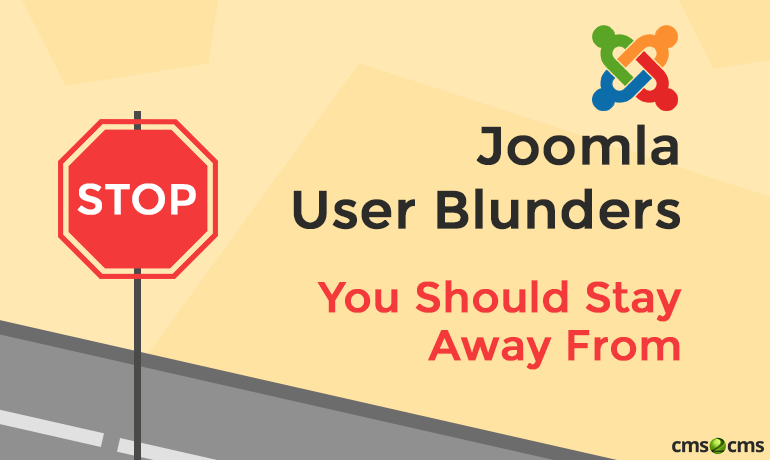With its ease of use, extensibility, and open-source nature, Joomla is a great platform to start a website on. Still, setting out in the sea of website management is not the piece of cake. Until you get enough hands-on experience, there are a lot of bumps to go through. Our post is aimed at easing up the starting a bit and providing you with the list of things you should avoid when running your Joomla website prepared by experts from Apptha.com.
1. Unconventional web designing
2. Backfiring SEO strategy
While poor keyword choices and inconsistent content hurt SEO to a great extent, placing irrelevant information in the H-tags or heading tags add more woes to the injury. The H tag is exclusively designed for adding information about the “heading” of that particular page to get indexed by search engine spiders. But, oftentimes, people tend to fill it up with paragraphs, company information, and irrelevant details on the H tags, which in turn messes up the entire SEO process, leaving your site unnoticed by search engines; in other words, you lose potential customers on a constant basis.
3. Security fall back
As raising websites
4. Link woes
Helping a site getting indexed in search engines is a daunting task and almost impossible without link building. Generally, a website comprises two kinds of links, internal and external. When a user clicks an external link, the new page should pop-up, not exactly on the same window but on a new window. If it happens to be
5. Copy/paste from MS Word
While MS Word is the automatic tool everyone turns out for when preparing content, loading the content directly into the Joomla HTML editor will take your website completely down. And you may have to wait for a long time to bring it up again;
6. Using “Admin” as username
By going with the default username, you voluntarily give up half of the necessary access details to hackers. The only thing needed for them to break into your site is your password, which is not that hard to guess (especially if you’re using your birth date or something like that). So,
7. Uploading images without resizing
Usually, users tend to upload images in their original size to Joomla and then resize them to suit the content. Visually, this works, but the “weight“ of an image isn’t changed by this, so if using extra large images, this slows down the page loading. It’s better to resize images using any of the image editors and only then upload them to Joomla.
8. Ignoring Alt tags
Images can be a used as one of the elements of SEO. For example, by using an Alt field, you tell a search engine what’s on the picture, as this is the only way a bot can recognize its content. So why not use this to include the keywords you’re optimizing the page for? With this little portion of info, you will be able to manage your Joomla website much more effectively.


Ihave several issues with “your” blog post.
1.*Website is not all about pulling a template off-the-shell and claiming you have pulled up an incredible designing for your site.*
Very poor English and spelling.
3. Security fall back
” System with a low security measures takes too much of time to load, ”
Absolute rot.
It makes no sense what ever in the English language . Why no mention of keeping your site and its extensions up to date? bakups? server specifications, folder permissions, dodgy downlod sites?
5. Copy/paste from MS Word
“While MS Word is the automatic tool everyone turns out for when preparing content, ”
Not for me it isnt
“loading the content directly into the Joomla HTML editor will take your website completely down. ”
Who told you that load of rubbish?
The whole article is link bait and a waste of time IMO